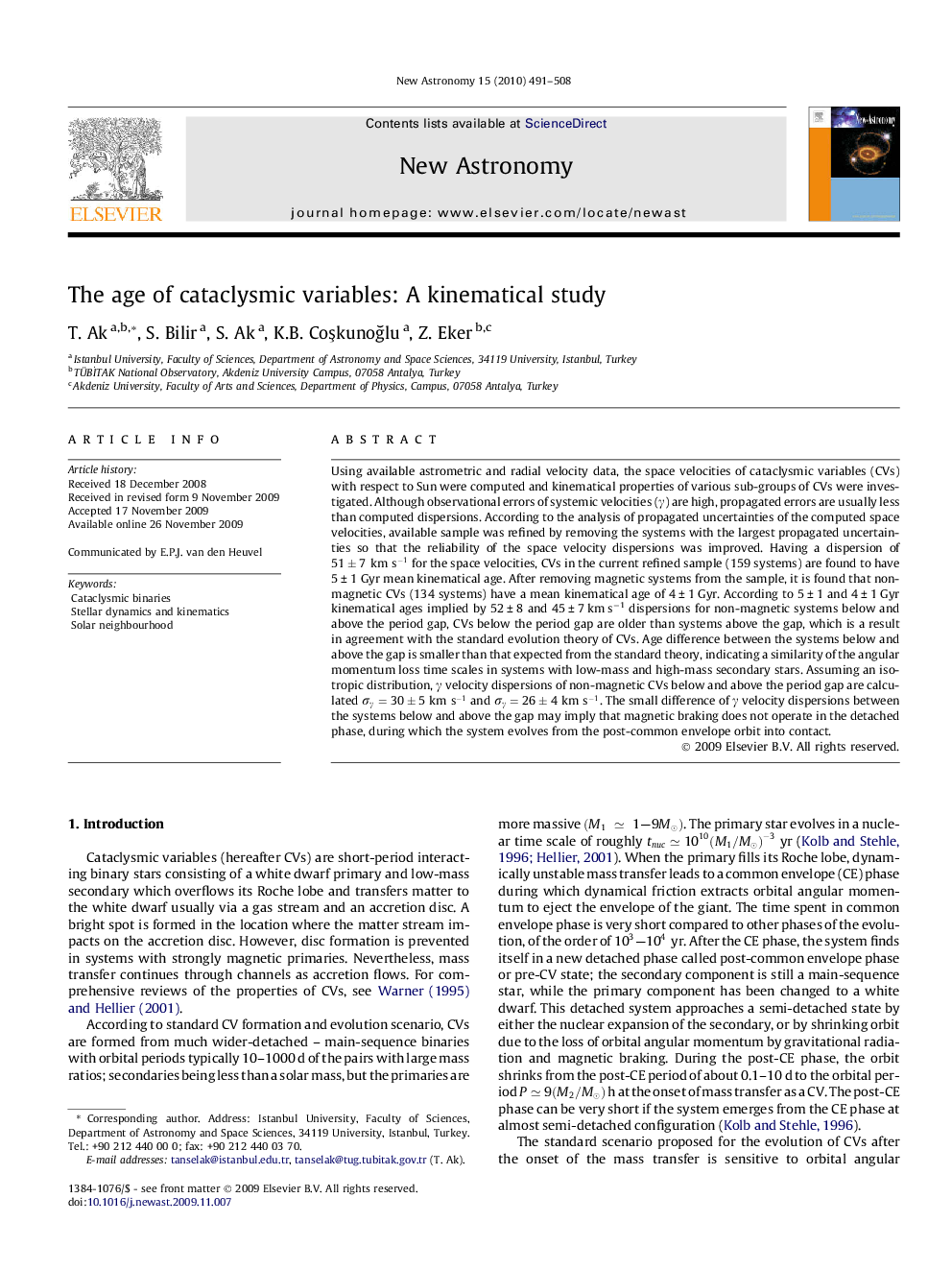| Article ID | Journal | Published Year | Pages | File Type |
|---|---|---|---|---|
| 1779503 | New Astronomy | 2010 | 18 Pages |
Abstract
Using available astrometric and radial velocity data, the space velocities of cataclysmic variables (CVs) with respect to Sun were computed and kinematical properties of various sub-groups of CVs were investigated. Although observational errors of systemic velocities (γ) are high, propagated errors are usually less than computed dispersions. According to the analysis of propagated uncertainties of the computed space velocities, available sample was refined by removing the systems with the largest propagated uncertainties so that the reliability of the space velocity dispersions was improved. Having a dispersion of 51±7kms-1 for the space velocities, CVs in the current refined sample (159 systems) are found to have 5 ± 1 Gyr mean kinematical age. After removing magnetic systems from the sample, it is found that non-magnetic CVs (134 systems) have a mean kinematical age of 4 ± 1 Gyr. According to 5 ± 1 and 4 ± 1 Gyr kinematical ages implied by 52 ± 8 and 45 ± 7 km sâ1 dispersions for non-magnetic systems below and above the period gap, CVs below the period gap are older than systems above the gap, which is a result in agreement with the standard evolution theory of CVs. Age difference between the systems below and above the gap is smaller than that expected from the standard theory, indicating a similarity of the angular momentum loss time scales in systems with low-mass and high-mass secondary stars. Assuming an isotropic distribution, γ velocity dispersions of non-magnetic CVs below and above the period gap are calculated Ïγ=30±5kms-1 and Ïγ=26±4kms-1. The small difference of γ velocity dispersions between the systems below and above the gap may imply that magnetic braking does not operate in the detached phase, during which the system evolves from the post-common envelope orbit into contact.
Related Topics
Physical Sciences and Engineering
Physics and Astronomy
Astronomy and Astrophysics
Authors
T. Ak, S. Bilir, S. Ak, K.B. CoÅkunoÄlu, Z. Eker,
